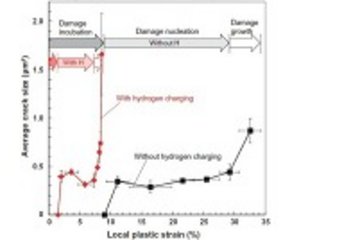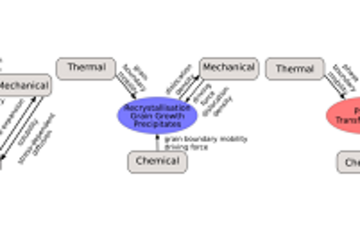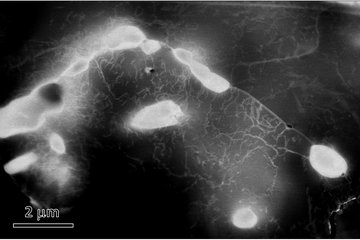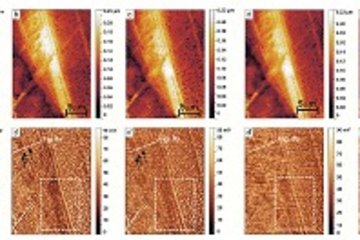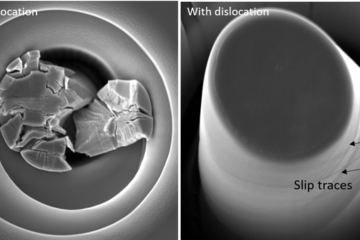All genres
121.
Talk
Composition dependence of phase stability, deformation mechanisms & mechanical properties of CoCrFeMnNi HEA’s. Compositionally Complex Alloys 2014, München, Germany (2014)
122.
Talk
Gum metal plasticity. The International Symposium on Plasticity 2014, Freeport, Bahamas, USA (2014)
123.
Talk
Bulk combinatorial design of high strength martensitic steels utilising austenite reversion and cryogenic strengthening. Thermec Conference, Las Vegas, NV, USA (2013)
124.
Talk
Influence of oxygen on the deformation behavior of Ti–Nb–Ta–Zr alloys. Thermec 2013, Las Vegas, NV, USA (2013)
125.
Talk
Examples of novel steel design: Ductile high strength martensitic steels developed by combinatorial techniques and liquid metallurgy MMCs with high stiffness and low density. Workshop "new frontiers in steel design", Institut für neue Materialien, Uni Saarbrücken, Saarbrücken, Germany (2013)
126.
Talk
Microstructural and Mechanical Characterization of Cold Work Effects in GUM Metal. 22th GLADD meeting, Düsseldorf, Germany (2013)
127.
Talk
"Rapid Alloy Prototyping" Compositional and Thermo-mechanical High Throughput Bulk Combinatorial Design of Structural Metallic Alloys. Euromat 2013, Sevilla, Spain (2013)
128.
Talk
Deformation Mechanisms in Ti–Nb–Zr–Ta–O alloys. Euromat 2013, Sevilla, Spain (2013)
129.
Talk
Microstructural and Mechanical Characterization of Cold Work Effects in GUM Metal. 9th International Conference on Advances in Experimental Mechanics, Cardiff, UK (2013)
130.
Talk
Nanostructuring 1 Billion Tons: Combining Rapid Alloy Prototyping, Multiscale Models, and Characterization for Advanced Manufacturing. 2nd World Congress on Integrated Computational Materials Engineering, Salt Lake City, UT, USA (2013)
131.
Talk
Effizientes Legierungsdesign durch kombinatorische Metallurgie und Prozesstechnik. Forschungsdialog Rheinland, IHK Wuppertal-Solingen-Remscheid, Wuppertal, Germany (2013)
132.
Talk
Combinatorial metallurgy for integrated and efficient alloy design. Fachbeirat, MPI f. Eisenforschung, Düsseldorf, Germany (2013)
133.
Talk
Rapid Alloy Prototyping. Alloy Design Workshop, MPI f. Eisenforschung, Düsseldorf, Germany (2013)
134.
Talk
Rapid Alloy Prototyping - Effizientes Legierungsdesign durch kombinatorische Metallurgie und Prozesstechnik. Institutsseminar at RWTH Aachen MCh, Aachen, Germany (2013)
135.
Talk
Rapid Alloy Prototyping - Effizientes Legierungsdesign durch kombinatorische Metallurgie und Prozesstechnik. Institutsseminar at RWTH Aachen IEhK, Aachen, Germany (2012)
136.
Talk
Rapid Alloy Prototyping - Effizientes Legierungsdesign durch kombinatorische Metallurgie und Prozesstechnik. VDEh Grundlagenausschuss Metallurgie, Düsseldorf, Germany (2012)
137.
Talk
Fundamental Research on the Role of Intermetallic Phases in Al-Fe Joints. VI-IPSUS Summer School, Hamburg, Germany (2010)
138.
Talk
Verbinden von hochfestem Stahl mit einer Aluminiumlegierung durch Rührreibschweißen. 4. GKSS Workshop, Geesthacht, Germany (2009)
139.
Poster
Innovative Metallurgical Design Strategies Tailored to Additive Manufacturing. MRS spring meeting, Phoenix, AZ, USA (2018)
140.
Poster
Tailoring multi-phase steel microstructures by controlling local chemical gradients. MSE 2014, Darmstadt, Germany (2014)





